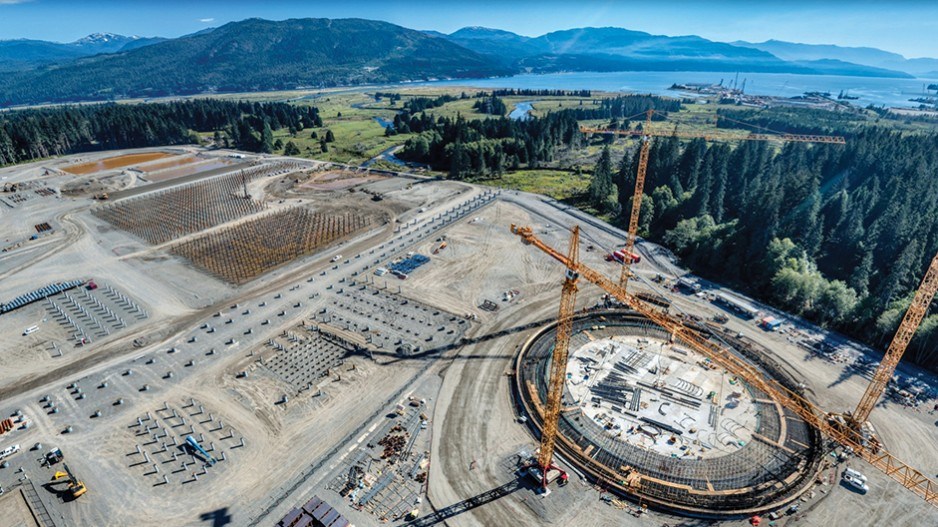The COVID-19 pandemic may have added delays and costs to one big energy project – Site C dam – but three others appear to have recovered quickly from a brief workforce contraction.
LNG Canada, Coastal GasLink and Trans Mountain were able to ramp back up construction over the summer after a brief dip in workforce numbers, and achieve some key milestones.
As of the end of August, the four big energy megaprojects in B.C. employed roughly 12,500 workers. That includes 4,600 at Site C dam, 2,849 for the Coastal GasLink pipeline and 3,000 with LNG Canada.
Trans Mountain employed 6,000 workers in B.C. and Alberta on its pipeline twinning project. Trans Mountain does not break those numbers down by province, but does report that one-third of those jobs – 2,000 – were held by British Columbians.
“More than 600 of those are Indigenous people,” said Trans Mountain spokesperson Ali Hounsell.
To date, the project has awarded 120 contracts to B.C. contractors and suppliers valued at $2 billion.
The first spread of the pipeline in the Edmonton area is 90% complete, in terms of pipe in the ground. The second spread, which runs to the B.C. border, is 20% complete. About 30% of the work to expand the Westridge marine terminal and Burnaby terminal is done.
“Overall, we’re about 16% complete,” Hounsell said. “We are where we want to be. We gain about 3% to 4% completion every month. We’re on track to be in service still by the end of 2022.”
Hounsell added that, despite an oil price crash and plunging demand, the existing Trans Mountain pipeline has been full and oversubscribed throughout the spring and summer.
“We continue to be full and it speaks to the diversity of the markets we serve,” Hounsell said.
“We had a record month for throughput in August. We got more product through the pipe than ever before in August. What we saw there was a lot of lighter products coming in – refined products to serve mostly the B.C. driving market.”
In April, all of the big projects scaled back their workforces to varying degrees, due to worries about the pandemic.
Concerns were raised about potential outbreaks in work camps. But apart from a few isolated cases of COVID-19 among individual workers, there were no outbreaks among work crews or in work camps, and hiring at all projects resumed to take advantage of a summer construction season.
Coastal GasLink reports that, as of the end of August, all work camps along the various sections of the pipeline were operational, about 75% of the right-of-way is cleared, and pipe has started going into the ground along some spreads.
The one section that has not progressed significantly in terms of clearing, grading or pipe installation is the 78-kilometre section that cuts through Wet’suwet’en territory – the scene of blockades in 2019 and early in 2020. Only 15% of the 78-kilometre spread is cleared.
As for the LNG Canada plant and export terminal in Kitimat, the project has hit “some pretty critical milestones,” said Susannah Pierce, director of corporate affairs for LNG Canada.
One of them was the completion of Phase 1 of the Cedar Valley Lodge work camp that will house up to 4,500 workers. It opened this summer and by the end of 2020 it will house roughly 1,500 workers. Installation of pilings for a tank site is complete.
In August, roughly 3,000 workers were employed on the project in Kitimat, about 800 of whom were locals. Approximately $2.2 billion in local and Indigenous contracts have been awarded.
“Things, despite the pandemic, are going well,” Pierce said. “So we’re feeling pretty positive about it.”
It’s expected that about 1,000 workers will be added by the end of this year, with peak construction starting near the end of 2021.
Ken Peacock, chief economist for the Business Council of British Columbia, said that when the four main metropolitan areas are pulled out of labour force numbers, rural B.C. appears to have weathered the pandemic much better than urban B.C. •




